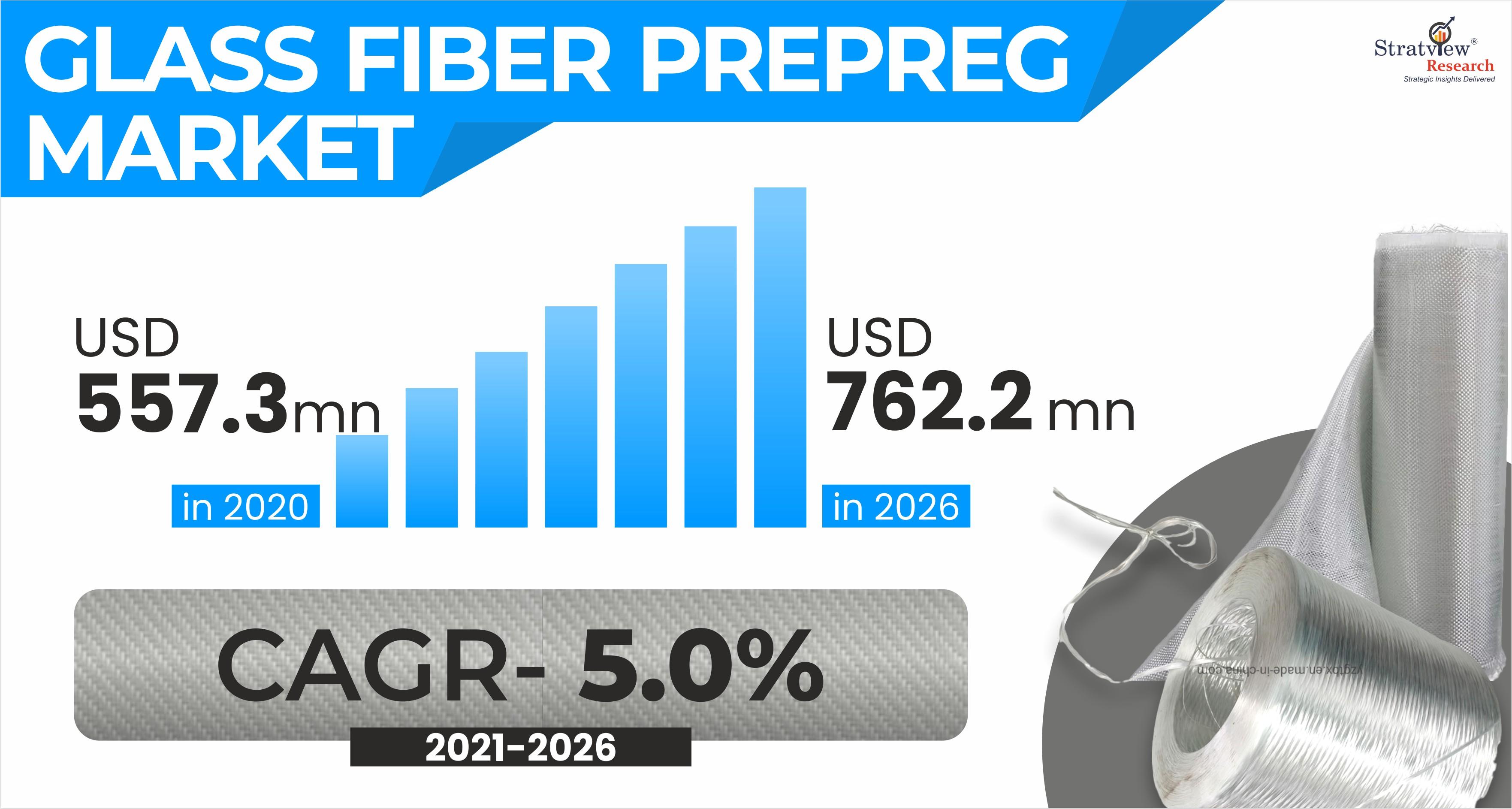Inside Glass Fiber Prepreg: End-Use Priorities, Processing Routes, and Regional Dynamics

Glass fiber prepregs balance cost and performance: robust FST, solid stiffness/strength, and consistent lay-up—attributes that keep them relevant as composite adoption widens. Stratview Research pegs the glass fiber prepreg market at USD 557.3 million (2020), reaching USD 762.2 million by 2026 at a 5.0% CAGR.
Request a sample report to preview our in-depth analysis:
https://www.stratviewresearch.com/Request-Sample/3735/glass-fiber-prepreg-market.html#form
Drivers
- Wind-blade scale-up. Rising rotor diameters increase structural loads; Stratview notes that non-woven glass-prepreg blades provide higher load-bearing capacity, supporting the industry’s shift to longer onshore/offshore blades—and sustained prepreg pull.
- Auto recovery & lightweighting. After the 2020 dip, automotive is rebounding; glass prepregs are being explored for monocoques, closures, and leaf springs where cycle time and cost targets align.
- Tighter standards. Emission and safety norms reward materials with good FST and durable performance, extending glass-prepreg use in transportation interiors and industrial panels.
Trends
1) End-use hierarchy. Wind energy remains the number-one end use; aerospace & defense and automotive provide incremental volume and application breadth (secondary aero parts, body panels, structural inserts).
2) Resin & form. Thermoset systems dominate on cost/handling; both UD and fabric forms are used, with UD favored for directional load paths. Stratview’s segmentation also highlights autoclave and out-of-autoclave curing routes, giving fabricators flexibility on rate and capex.
3) Region. North America is the largest market today, underpinned by OEM clusters in aircraft, auto, and wind; Asia-Pacific is the fastest-growing, backed by substantial wind installations and expanding aerospace/auto programs (e.g., C919 and regional OEM footprint expansion).
4) Players & positioning. A core group—Gurit, Hexcel, Kordsa, Park Aerospace, Solvay, Toray—competes on qualification depth, consistent tack/shelf-life, and tailored fabrics; long-term agreements and application co-development are typical routes to lock in offtake.
5) Watch-outs. Stratview notes headwinds: lingering low awareness in some emerging markets and concerns about potential health effects from certain fiberglass exposures—factors that underscore the need for training and best-practice handling.
Conclusion
Through 2026, the market’s center of gravity stays with wind energy, underwritten by blade lengthening and steady project pipelines; thermoset prepregs stay the workhorse system; and APAC provides the growth torque while North America holds the largest installed base. For suppliers, the winning mix is application-specific reinforcement architecture (non-woven/UD where loads demand), dependable thermoset chemistries, and close collaboration with blade and automotive programs to meet rate, cost, and performance targets.
- Art
- Causes
- Crafts
- Dance
- Drinks
- Film
- Fitness
- Food
- Jocuri
- Gardening
- Health
- Home
- Literature
- Music
- Networking
- Alte
- Party
- Religion
- Shopping
- Sports
- Theater
- Wellness




